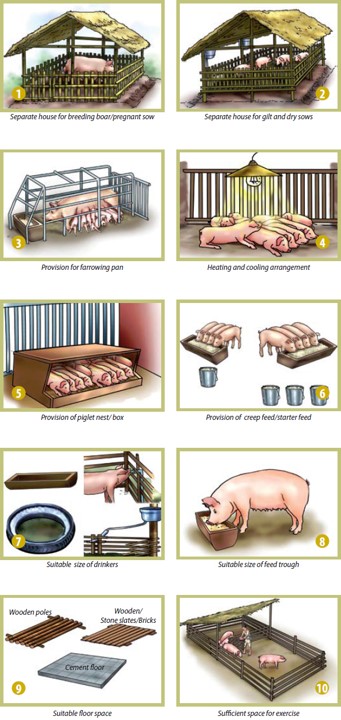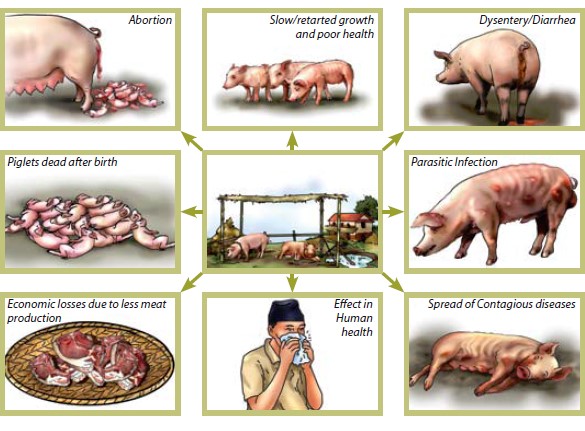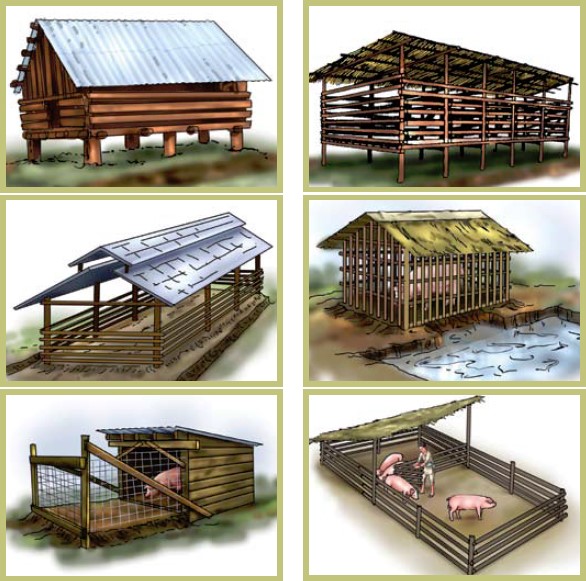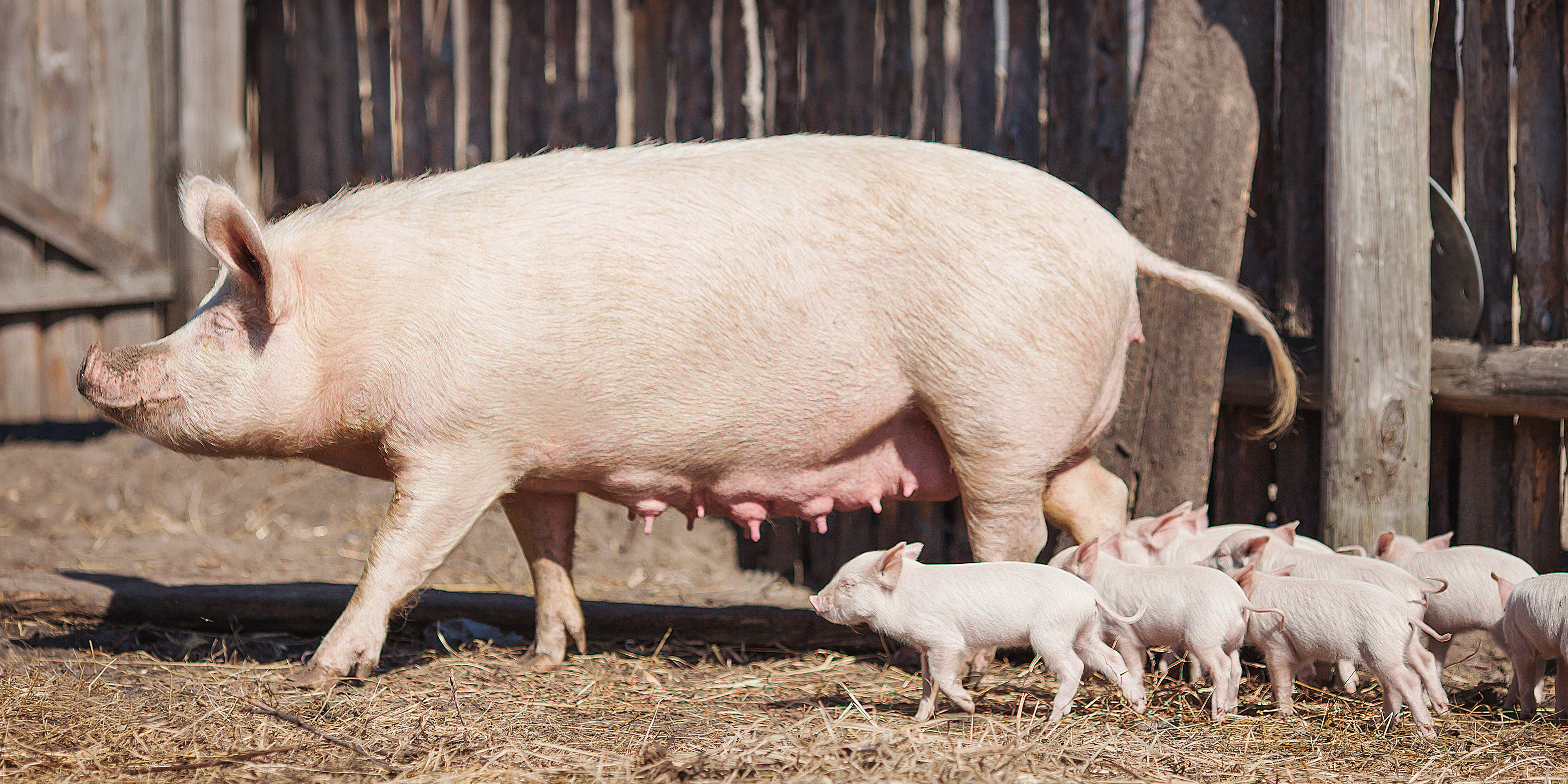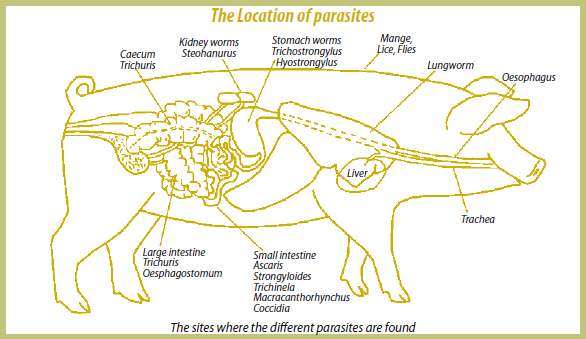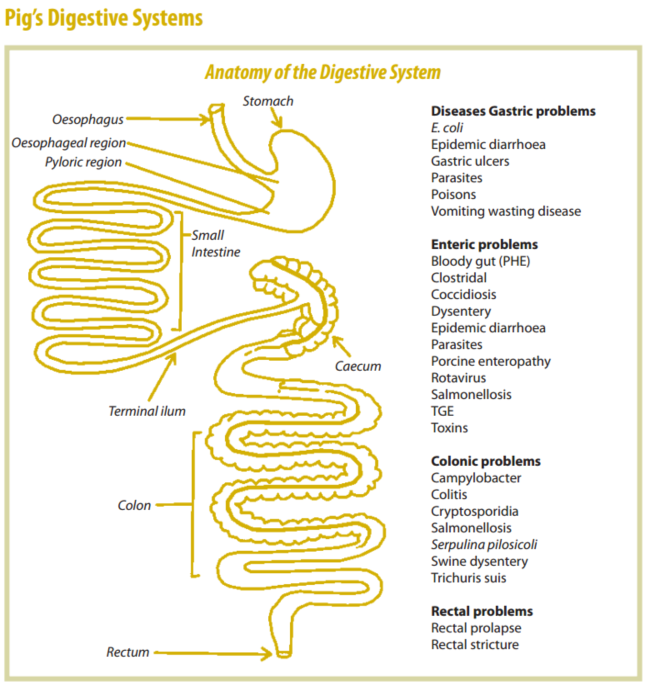



How to Farm Pigs - Housing
This guide from the FAO provides information on how to create the most efficient pig housing for small scale or backyard pig productionPart of Series:
< Previous Article in Series Next Article in Series >
Editor’s note: The content on this page was written specifically for farmers in Nepal. While much of the information will be applicable elsewhere, please be aware that every country has its own rules and regulations regarding housing animals. You must ensure your practices are in line with official regulations in your own region.
Elements for good housing
How to keep a healthy pig
Effects of inappropriate housing
Selection of housing locations
- The site should be at an elevated place that cannot be flooded by rain water.
- The site should be protected from the sun (shade from trees) and have ample fresh air.
- Away from residences (around 8-10 meter away downwind).
- In case of a large-scale pig farm, the site selected needs also to be: well connected to roads throughout the year,
- Suitable for manure disposal, connected to reliable water and electricity sources.
Construction plan for good pig housing
The important points about the pig house are as follows:
- The floor of the house must be 3 x 3 m.
- The floor of the house must be raised about 60 cm above the ground.
- The floor boards should have spaces of 2 cm between them.
- The roof must be rain-proof.
- The high side of the roof should face in a direction where some sun can shine a little way into the house on this side: but there must always be shade in some part of the house.
- The house must be strongly built.
A pigsty can be constructed cheaply by using locally available materials. It needs to be constructed according to climatic conditions and according to the pig production system.
- The pigsty should be comfortable for the pigs: good ventilation and ample shade, no overheating, no smells, no draft and no dampness.
- The building should be constructed with its length axis in an East-West direction (protected from sun and rain).
- The pig building needs to be divided into different pens for each phase of the production cycle. The number and the size of the pens depend on the expected numbers of pigs to be housed in each production phase.
- The costs of constructing the pigsty should fit the pig production systems. An efficient pig production is required to cover high construction costs.
Generally, there are three types of pigsty buildings:
| Pig’s Category | Space required | Model | Remarks |
| Fattening pig | Per pig 0.5 - 1.0 sqm |  |
A flat, solid floor is usually made from cement (but not polished to avoid slipping) or from hard soil. The floor should be sloping away to the rear to facilitate cleaning with water. |
| Pregnant sows | Per sow 1.5 - 2.0 sqm |  |
Pregnant sows need a quiet environment. Therefore individual pens are some- times used for pregnant sows. In hot climates pregnant sows are alternatively housed in small groups of three. |
| Lactating sows | Per sow 4 - 6 sqm |  |
Lactating sows need a quiet environment. Therefore individual pens are used. There should be provision for; farrowing pan, heating and cooling arrangements, Piglet nest/ box, creep feed /starter feed for piglets. |
| Weaner piglets | Per piglet 0.3 – 0.5 sqm |  |
A flat, solid floor is usually made from cement (but not polished to avoid slipping) or from hard soil. The floor should be sloping away to the rear to facilitate cleaning with water. |
| Breeding boars | Per boar 6 - 8 sqm |  |
Special care is required to prevent boars from escaping to the gilts and sows that are on heat (strong and high partitions). |
Different models/types of pig house/sheds
Also of interest
Further Reading
You can view the full FAO Farmer's Handbook on Pig Production by clicking here.







